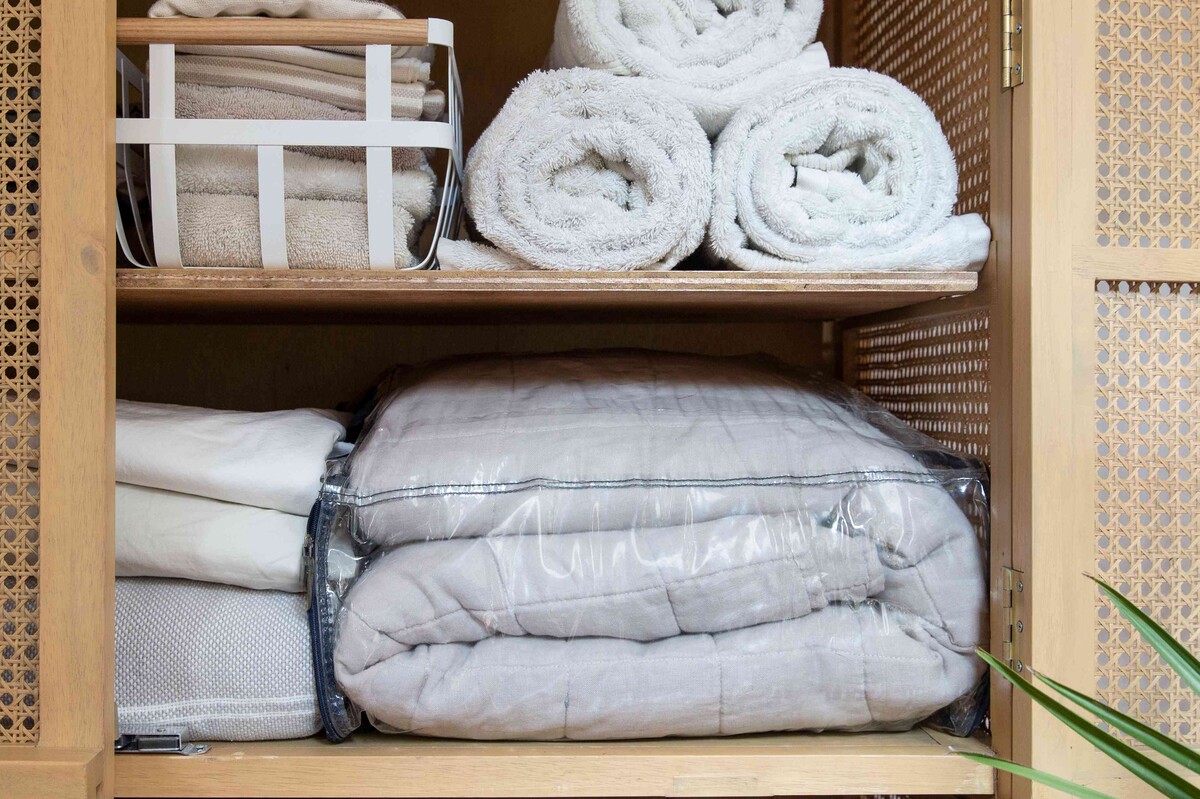

Articles
How To Store Extra Comforters
Modified: January 24, 2024
Discover the best ways to store your extra comforters with our informative articles. Keep your bedding fresh and organized with these helpful tips.
(Many of the links in this article redirect to a specific reviewed product. Your purchase of these products through affiliate links helps to generate commission for Storables.com, at no extra cost. Learn more)
Introduction
Welcome to our guide on how to store extra comforters. Comforters are a great addition to any bed, providing warmth and comfort during the colder months. However, when the seasons change or if you simply have too many comforters taking up space in your linen closet, it’s essential to know how to properly store them to keep them clean, organized, and in good condition.
In this article, we will walk you through the steps to efficiently store your extra comforters. From assessing your storage space to choosing the right storage container, cleaning and preparing your comforters, to folding and packing them properly, we’ve got you covered. We will also discuss how to label and organize your storage containers for easy retrieval and provide tips on checking and maintaining your stored comforters. So, let’s get started on transforming your storage woes and preserving your snug and cozy comforters.
Key Takeaways:
- Efficiently store extra comforters by assessing space, choosing the right containers, and cleaning and preparing comforters. Label and organize containers for easy retrieval, and periodically check and maintain stored comforters to ensure they remain in excellent condition.
- Retrieve and enjoy stored comforters by following a careful process of inspection, airing, washing if necessary, and making the bed. With proper care and preparation, your comforters will continue to provide warmth and comfort for many seasons to come.
Read more: How To Store Comforter
Assessing Your Storage Space
Before you begin the process of storing your extra comforters, it’s important to assess your available storage space. This will help you determine how many comforters you can store and what type of storage containers you will need.
First, take a look at your linen closet or any other designated storage area. Measure the available space, including the height, width, and depth of the shelves or storage units. This will give you an idea of how much space you have to work with. Consider utilizing any unused space such as the top shelves or the floor of your closet, if applicable.
Next, evaluate the number of comforters you need to store. Take into account the size and thickness of each comforter. Keep in mind that bulky comforters will require more storage space. If you have limited storage space, you may need to consider donating or repurposing some of your comforters to free up space.
Once you have determined the available storage space and the number of comforters you have, you can calculate how many storage containers you will need. Consider investing in vacuum-sealed bags or storage bins that are specifically designed for bedding. These containers will help save space and protect your comforters from dust, moisture, and pests.
By assessing your storage space, you can effectively plan how to store your extra comforters. This will ensure that you utilize your available space efficiently and keep your comforters well-protected during their time in storage.
Choosing the Right Storage Container
When it comes to storing extra comforters, choosing the right storage container is key. The container you select should provide adequate protection against dust, moisture, and pests, while also being sturdy enough to support the weight of your comforters.
One popular option for storing comforters is vacuum-sealed bags. These bags use a vacuum to remove excess air, shrinking the size of the comforter and maximizing storage space. Vacuum-sealed bags are ideal for those who have limited storage space or want to store their comforters in a compact and organized manner.
If you prefer using storage bins, make sure to choose ones that are made of durable materials such as plastic or fabric. Look for containers with secure lids that will keep dust and pests out. Additionally, consider bins with handles for easy transport and stackable designs to maximize vertical space.
Another important factor to consider is the size of the storage container. Ensure that it is large enough to comfortably fit your comforters without cramming or crushing them. However, avoid using containers that are excessively large as they may take up unnecessary space and make it difficult to stack or organize.
When selecting a storage container, it’s also a good idea to opt for ones that are transparent or have clear labeling options. This will allow you to easily identify the content without having to open each container. Keeping your comforters visible will simplify the process of retrieving specific comforters when you need them.
Remember to prioritize the quality and durability of the storage container to protect your comforters from dampness, dirt, and possible damage. By choosing the right storage container, you can ensure that your comforters remain in excellent condition until it’s time to bring them out again.
Cleaning and Preparing Your Comforters
Before storing your extra comforters, it’s essential to clean and prepare them properly to ensure they stay fresh and in good condition while in storage.
Start by checking the care label instructions on your comforters for any specific cleaning recommendations. Most comforters can be machine washed, but some may require special care or professional cleaning. Follow the instructions carefully to avoid any damage to your comforters.
Thoroughly wash and dry your comforters before storing them. This will remove any dirt, dust, or allergens and prevent them from attracting pests or developing musty odors during storage. Use a mild detergent and set the washing machine to the appropriate water temperature and cycle for your comforters.
If you are using a large commercial washing machine, ensure that the comforters have ample space to move freely and get thoroughly cleaned. If your comforters are too large for your washing machine or if they are delicate, consider taking them to a laundromat with high-capacity machines or seek professional cleaning services.
After washing, make sure to dry your comforters completely before storing them. You can either air dry them outdoors, weather permitting, or use a dryer on a low-heat setting. To speed up the drying process, add a few clean tennis balls or dryer balls to help fluff up the comforters and distribute the filling evenly.
Once dry, give your comforters a thorough shake to fluff them up and redistribute the filling. This will help maintain their loft and ensure they stay soft and cozy when you use them again.
It’s also a good idea to place a fabric freshener sheet or sachet inside the storage container with your comforters. This will help keep them smelling fresh and deter any potential odors from developing over time.
By cleaning and preparing your comforters before storage, you can ensure that they stay clean, fresh, and ready to use when you need them again. Taking this extra step will help prolong the lifespan of your comforters and maintain their quality for years to come.
Folding and Packing Your Comforters
Properly folding and packing your comforters is crucial for maximizing storage space and keeping them in good condition while in storage. Follow these steps to ensure your comforters are well-organized and protected:
1. Start by folding your comforters in a neat and uniform manner. Lay the comforter flat on a clean and spacious surface, smoothing out any wrinkles or creases.
2. Fold the comforter in half lengthwise, bringing the bottom edge up to meet the top edge. This will create a long rectangle shape.
3. Next, fold the comforter in half widthwise, bringing one side over to meet the other. This will result in a smaller square shape.
4. If your comforter is particularly large, you may need to fold it in thirds instead of halves to fit it into the storage container more efficiently. Simply fold one side in halfway, then fold the other side over to meet it.
5. Once folded, gently press down on the comforter to remove any excess air. This will help create a more compact and space-saving shape.
6. Carefully place the folded comforter into your chosen storage container. If using a vacuum-sealed bag, follow the manufacturer’s instructions on how to properly seal and remove the air. If using a storage bin, ensure that the comforter lays flat and does not get excessively compressed or crumpled.
7. If you have multiple comforters to store, it’s best to separate them with tissue paper or cotton sheets to prevent them from sticking together or developing any friction-related damages.
8. When packing multiple comforters, layer them in the storage container, with the heavier or thicker comforters at the bottom and the lighter ones on top. This will help maintain the shape of the comforters and prevent any unnecessary pressure on the fabrics or fillings.
9. Finally, secure the storage container with a tight-fitting lid or seal. This will help keep out dust, moisture, and pests, ensuring that your comforters remain clean and well-protected.
By following these folding and packing guidelines, you can store your comforters efficiently and avoid any potential damage or loss of shape. With proper folding and packing techniques, your comforters are ready to be stored safely until they are needed again.
Consider using vacuum storage bags to compress and store extra comforters. This will save space and protect the comforters from dust and moisture.
Read more: How To Store Extra Smoothie
Labeling and Organizing Your Storage Containers
Labeling and organizing your storage containers is essential for easy retrieval and efficient use of your stored comforters. By implementing a labeling system, you can quickly find the comforter you need without having to search through multiple containers. Here are some tips for labeling and organizing your storage containers:
1. Use clear and visible labels: Ensure that your labels are clearly written and easily readable. You can use adhesive labels, masking tape, or even directly write on the container with a permanent marker. Make sure the labels are large enough to be seen at a glance.
2. Include relevant information: When labeling your storage containers, include information that helps you identify the contents. This can include the size of the comforter, its color, or even the room it belongs to. The more specific the label, the easier it will be to locate the desired comforter later.
3. Keep an inventory list: Create an inventory list that corresponds to the labels on your storage containers. This will help you keep track of which comforters are in each container. You can use a simple spreadsheet or a notebook to maintain the inventory list.
4. Group similar comforters together: Consider organizing your comforters based on size, season, or frequency of use. This will make it easier to locate specific comforters when needed. For example, you can group all queen-size comforters together or separate winter comforters from those used in warmer seasons.
5. Stack and organize containers strategically: Maximize your storage space by stacking containers vertically, with the labeled side facing outward. This way, you can easily identify the comforters in each container without having to remove or open them.
6. Create an accessible storage system: Place the containers containing the comforters you use less frequently at the back or on higher shelves. Reserve the front or lower shelves for the containers with comforters you use more often. This will make it easier to access the comforters you need without having to move multiple containers.
By implementing a labeling and organizing system for your storage containers, you can save time and effort when searching for specific comforters. With a well-structured storage system, you can maintain an organized and clutter-free storage area for your extra comforters.
Storing Your Comforters in a Suitable Location
Choosing a suitable location for storing your comforters is crucial to ensure they remain in good condition and are easily accessible when needed. Here are some factors to consider when deciding on the storage location:
1. Cool and dry area: Select a cool and dry area in your home for storing your comforters. Moisture and high temperatures can promote the growth of mold, mildew, and attract pests, which can damage your comforters. Avoid areas such as basements or attics that may be prone to moisture or extreme temperature fluctuations.
2. Protection from sunlight: Direct exposure to sunlight can cause the colors of your comforters to fade over time. Choose a storage location away from windows or use opaque containers to shield your comforters from sunlight.
3. Elevated storage: If possible, store your comforters on elevated shelves or platforms to protect them from potential water damage in case of any leaks or flooding that may occur. This will provide an extra layer of protection for your stored comforters.
4. Pest prevention: Take precautions to protect your comforters from pests such as moths or rodents. Use sealed storage containers or vacuum-sealed bags to prevent pests from accessing your comforters. Additionally, consider using natural pest repellents, such as cedar chips or lavender sachets, inside the storage containers.
5. Accessible location: Store your comforters in a location that is easily accessible. Avoid stacking heavy or bulky items on top of the containers, as this can lead to damage or make it challenging to retrieve a specific comforter when needed.
6. Consider climate-controlled storage: If you live in an area with high humidity or extreme temperature fluctuations, you may want to consider climate-controlled storage options. Climate-controlled environments help maintain stable temperature and humidity levels, which can prevent any potential damage to your comforters.
By storing your comforters in a suitable location, you can ensure that they remain well-protected and easily accessible. Following these guidelines will help maintain the quality and lifespan of your comforters while they are in storage.
Checking and Maintaining Your Stored Comforters
While your comforters are in storage, it’s important to periodically check on them and perform maintenance to ensure they remain in good condition. Here are some helpful tips for checking and maintaining your stored comforters:
1. Regular inspections: Schedule regular intervals to check on your stored comforters. This can be done every few months or at least once a year. Inspect the storage containers for any signs of pests, moisture, or damage. Look for any unusual odors or discoloration on the comforters.
2. Air circulation: Occasionally, open the storage containers and allow the comforters to breathe. This will help prevent any potential musty smells and allow for air circulation. If possible, place the comforters outside in a well-ventilated area on a sunny day to air them out.
3. Pest control: Keep an eye out for any signs of pests such as moths, bed bugs, or rodents. If you notice any pest activity, take immediate action to address the issue. Remove and isolate any infested comforters, and consult with pest control professionals if needed.
4. Re-fold and re-position: Over time, comforters may lose their original shape or develop creases from being stored for a prolonged period. Take the opportunity during inspections to re-fold and re-position the comforters, ensuring they maintain their loft and remain in good condition.
5. Replace damaged storage containers: If you notice any damage or wear to your storage containers, such as cracked plastic bins or torn vacuum-sealed bags, replace them as needed. Damaged containers can allow dust, moisture, or pests to enter and potentially damage your comforters.
6. Temperature and humidity control: Depending on your storage location, monitor the temperature and humidity levels periodically. Extreme fluctuations or excessive humidity can have a negative impact on your comforters. Use dehumidifiers or moisture-absorbing products if necessary.
7. Rotate storage: Consider rotating the stored comforters periodically. By using different comforters every season, you can ensure that all of your comforters receive equal use and prevent one from being stored for an extended period.
By regularly checking and maintaining your stored comforters, you can address any potential issues promptly and ensure that they remain in optimal condition. Taking these simple steps will help preserve the quality and appeal of your comforters during their time in storage.
Retrieving and Using Your Stored Comforters
When the time comes to retrieve and use your stored comforters, it’s important to do so with care to ensure they are clean, fresh, and ready for use. Follow these steps to retrieve and enjoy your stored comforters:
1. Identify the desired comforter: Refer to your labeling system or inventory list to locate the specific container where the comforter is stored. Look for the label that corresponds to the comforter you wish to retrieve.
2. Remove the storage container: Carefully remove the storage container from the designated storage area, making sure not to damage or disrupt any other containers in the process.
3. Inspect the comforter: Before using the comforter, inspect it for any signs of damage, stains, or odors. If you notice any issues, assess whether they can be easily addressed or if professional cleaning is needed.
4. Air out the comforter: If the comforter has been stored for an extended period, it may benefit from being aired out. Hang the comforter outside, preferably on a sunny and breezy day, to allow for fresh air and to remove any potential odors that may have accumulated during storage.
5. Wash if necessary: If the comforter requires cleaning, follow the care instructions on the label or consult with the manufacturer’s recommendations. Use a gentle cycle and a mild detergent to maintain the integrity of the comforter fabric and filling.
6. Fluff and restore the comforter: After washing, fluff up the comforter by giving it a good shake or tumble drying it on a low-heat setting with dryer balls or clean tennis balls. This will help restore its loft and improve its overall appearance and functionality.
7. Make the bed: Once your comforter is clean and fresh, make the bed with your newly retrieved comforter. Arrange it evenly and ensure it covers the bed appropriately for a cozy and inviting look.
8. Enjoy the comforter: Curl up under the warmth and comfort of your retrieved comforter. Enjoy the luxurious feeling and peaceful sleep it provides, knowing that your stored comforters have been well-maintained and prepared for use.
By following these steps, you can easily retrieve and enjoy your stored comforters. With proper care and preparation, your comforters will continue to provide you with softness, warmth, and a cozy sleep experience for many seasons to come.
Read more: How To Store Extra Bedding
Conclusion
Storing extra comforters doesn’t have to be a daunting task when you have a proper plan in place. By assessing your storage space, choosing the right storage containers, cleaning and preparing your comforters, folding and packing them efficiently, labeling and organizing your storage containers, finding a suitable storage location, and checking and maintaining your stored comforters, you can ensure they remain in excellent condition until you need them again.
Remember to periodically check on your stored comforters and perform necessary maintenance to address any issues that may arise. By following these steps, you can extend the lifespan of your comforters, keep them fresh and clean, and make the retrieval process hassle-free when you want to use them.
Make the most out of your storage space by implementing a labeling and organizing system, and consider utilizing vacuum-sealed bags or sturdy storage containers to protect your comforters from dust, moisture, and pests.
When it’s time to retrieve and use your stored comforters, inspect them for any damage, air them out if needed, and give them a thorough cleaning if necessary. Enjoy the comfort and warmth they provide as you make your bed with a freshly retrieved comforter.
With proper care and attention, your stored comforters will continue to bring you cozy nights of sleep and add a touch of luxury to your bed. So, take the time to store your extra comforters correctly, and rest easy knowing that they will be well-preserved until they are needed again.
Now that you have all the information you need, it’s time to get started on storing your extra comforters effectively. Happy organizing and enjoy the comfort and coziness of your stored comforters!
Frequently Asked Questions about How To Store Extra Comforters
Was this page helpful?
At Storables.com, we guarantee accurate and reliable information. Our content, validated by Expert Board Contributors, is crafted following stringent Editorial Policies. We're committed to providing you with well-researched, expert-backed insights for all your informational needs.


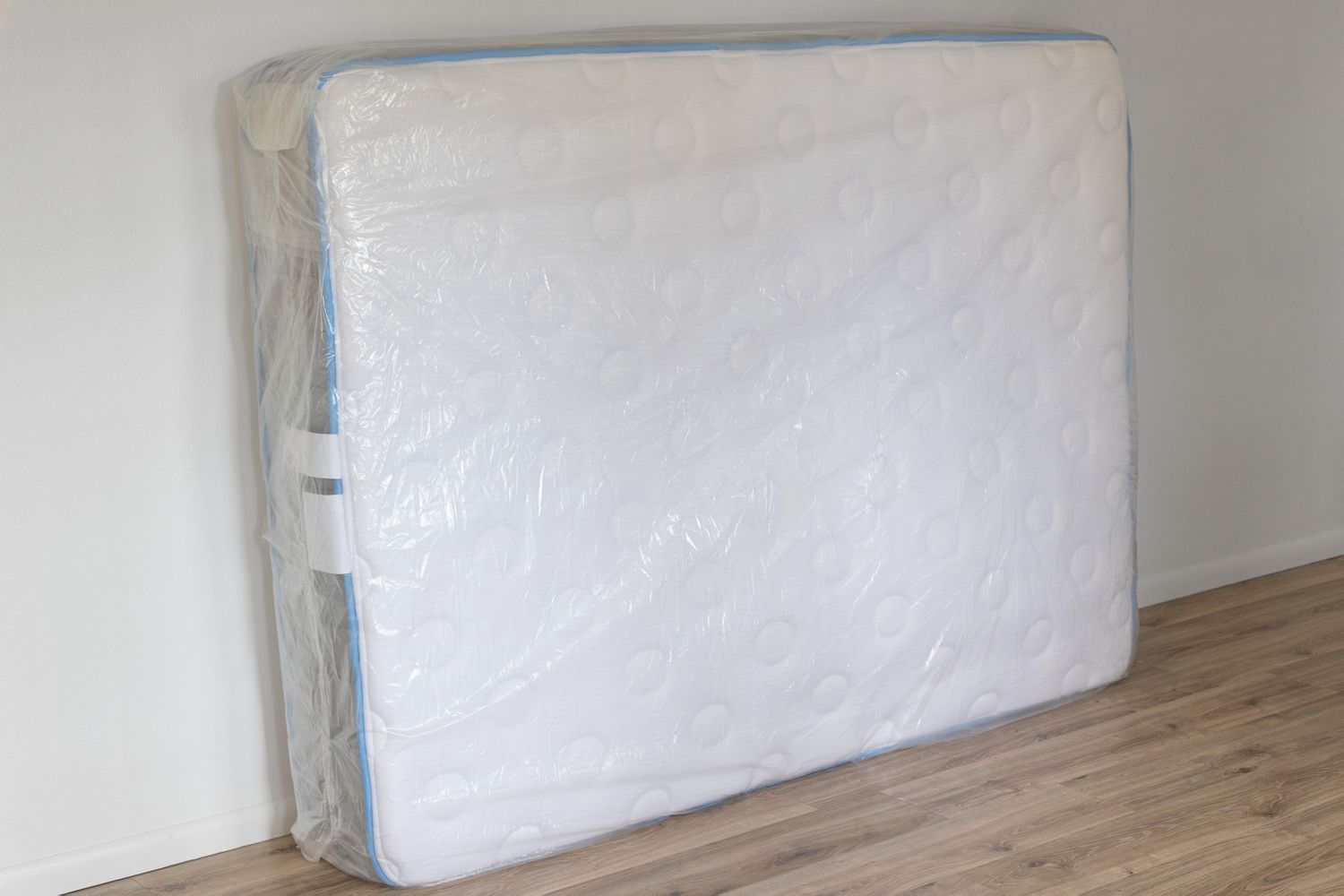

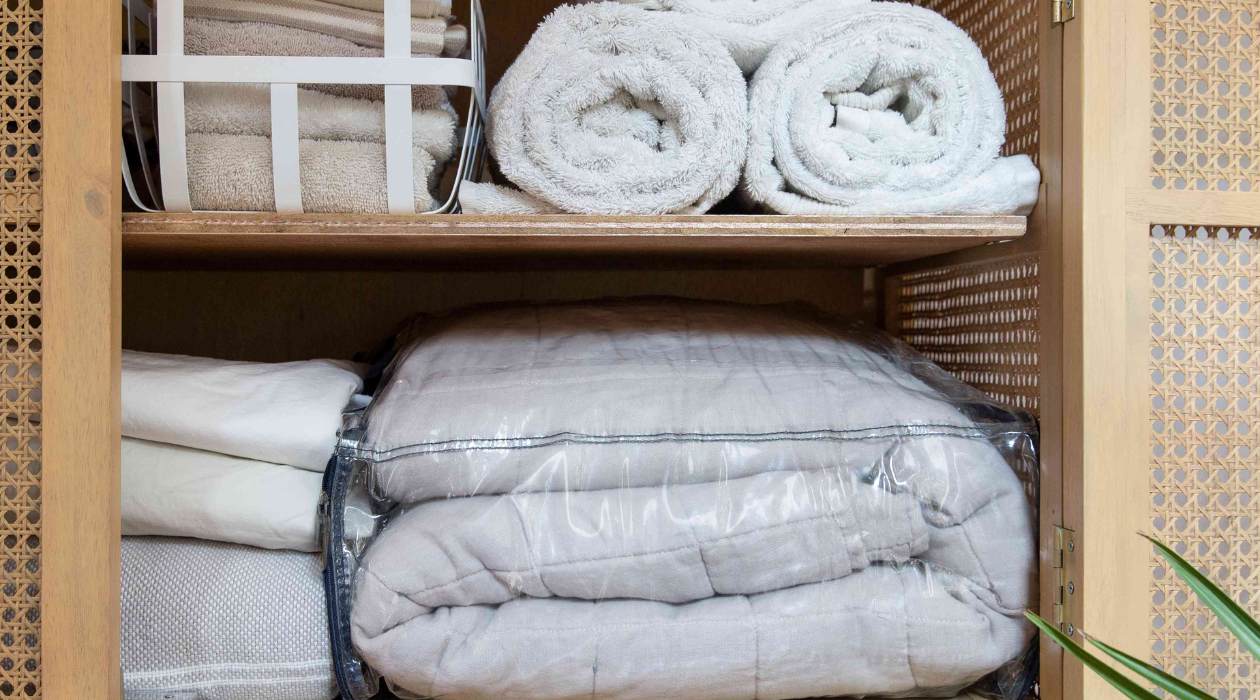

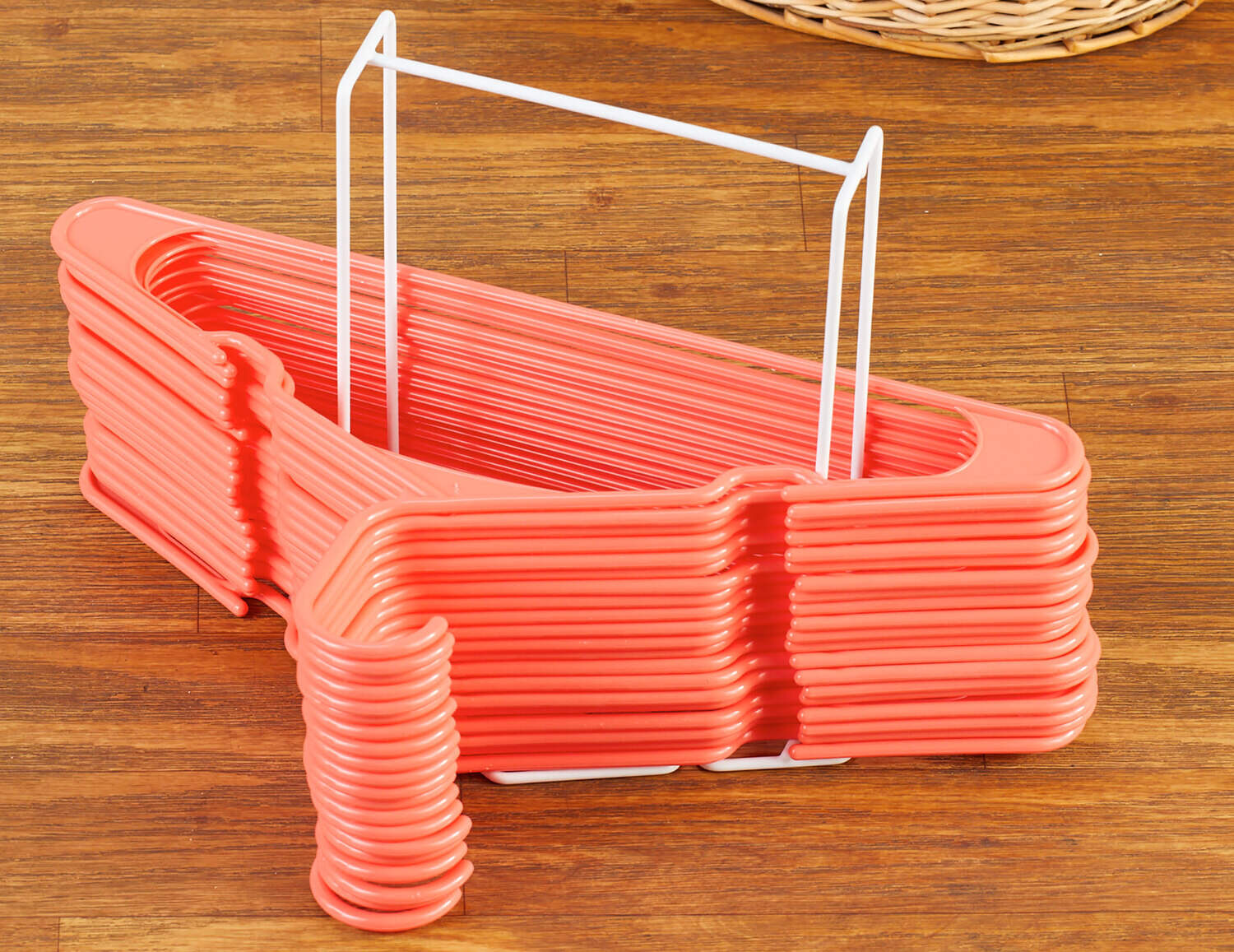
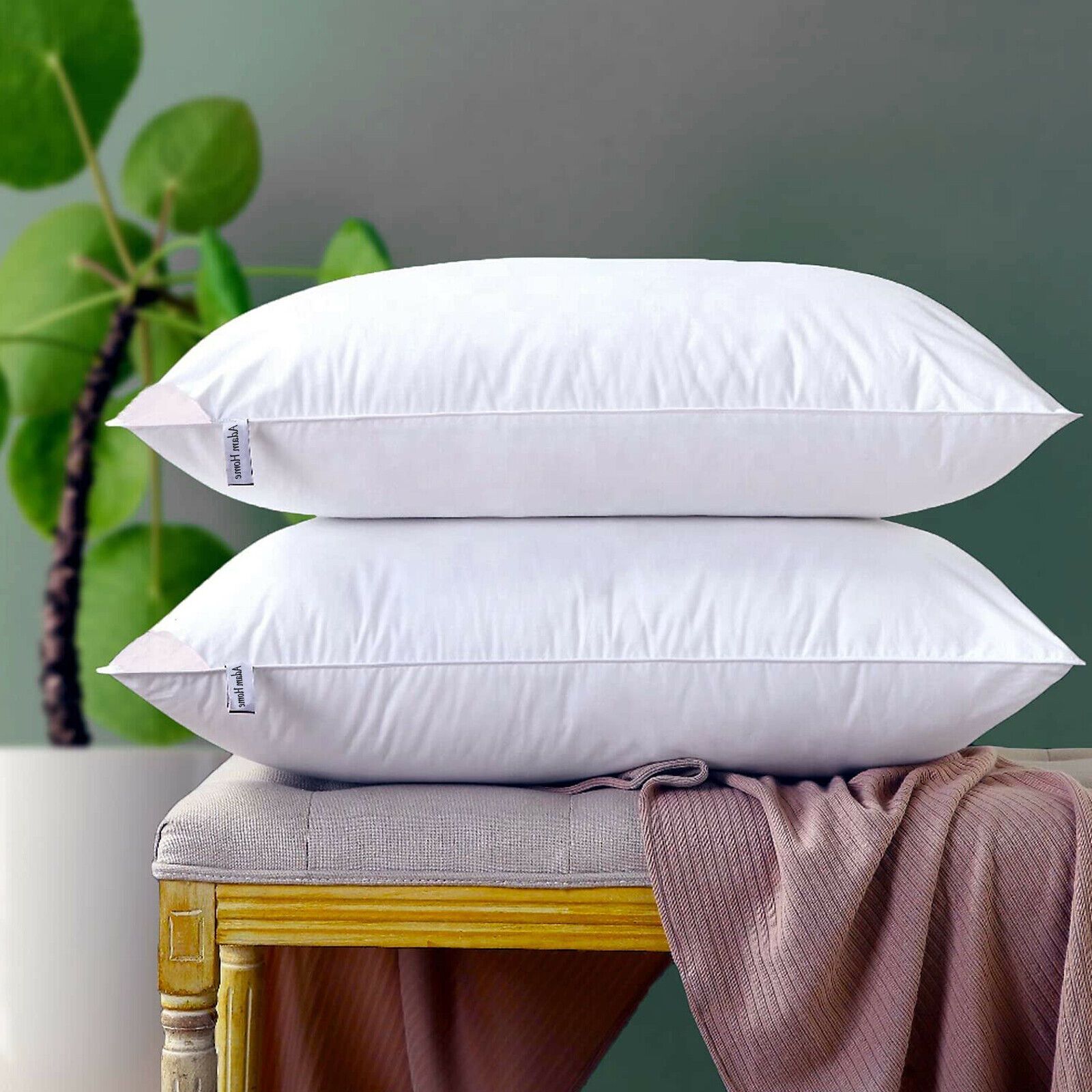
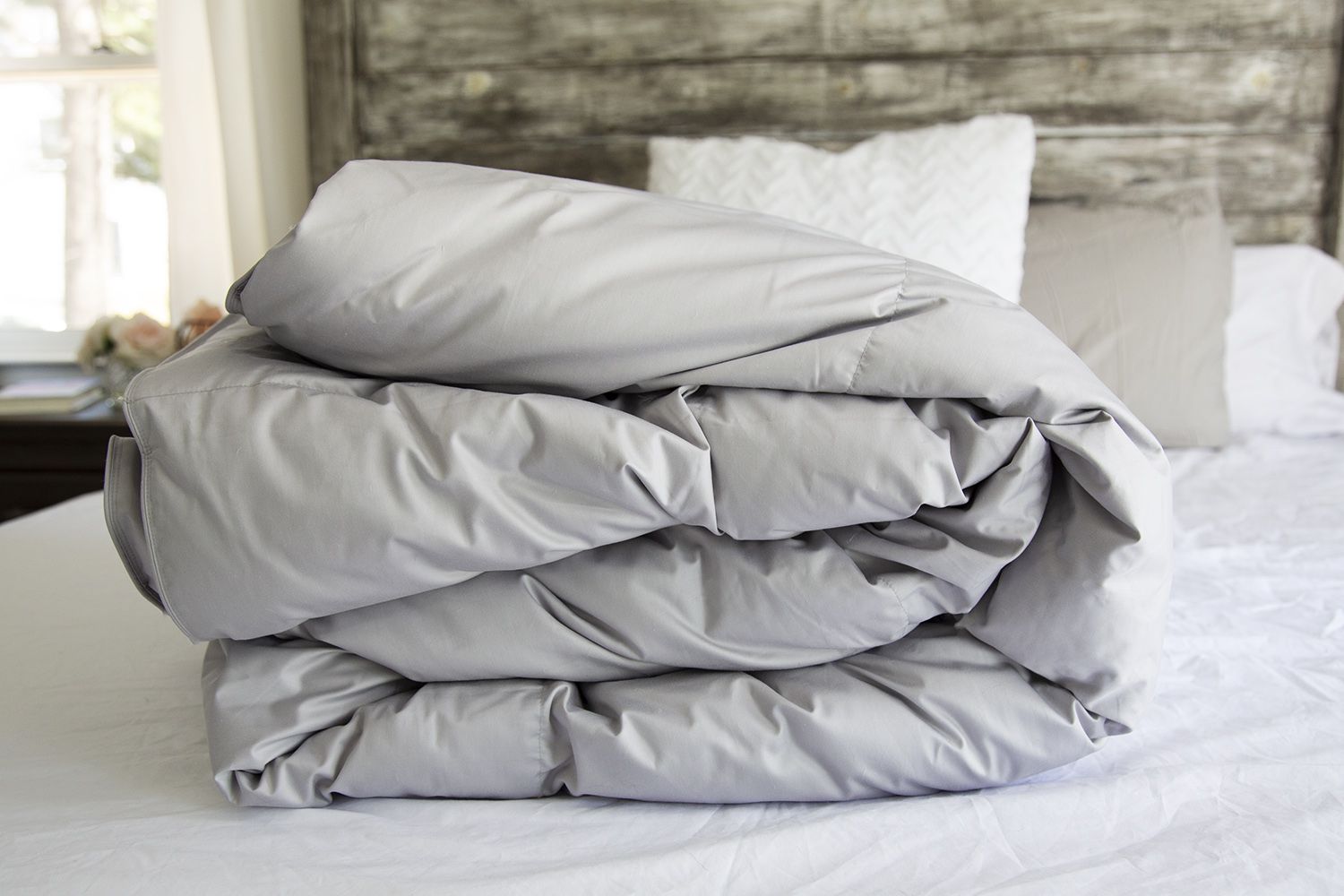

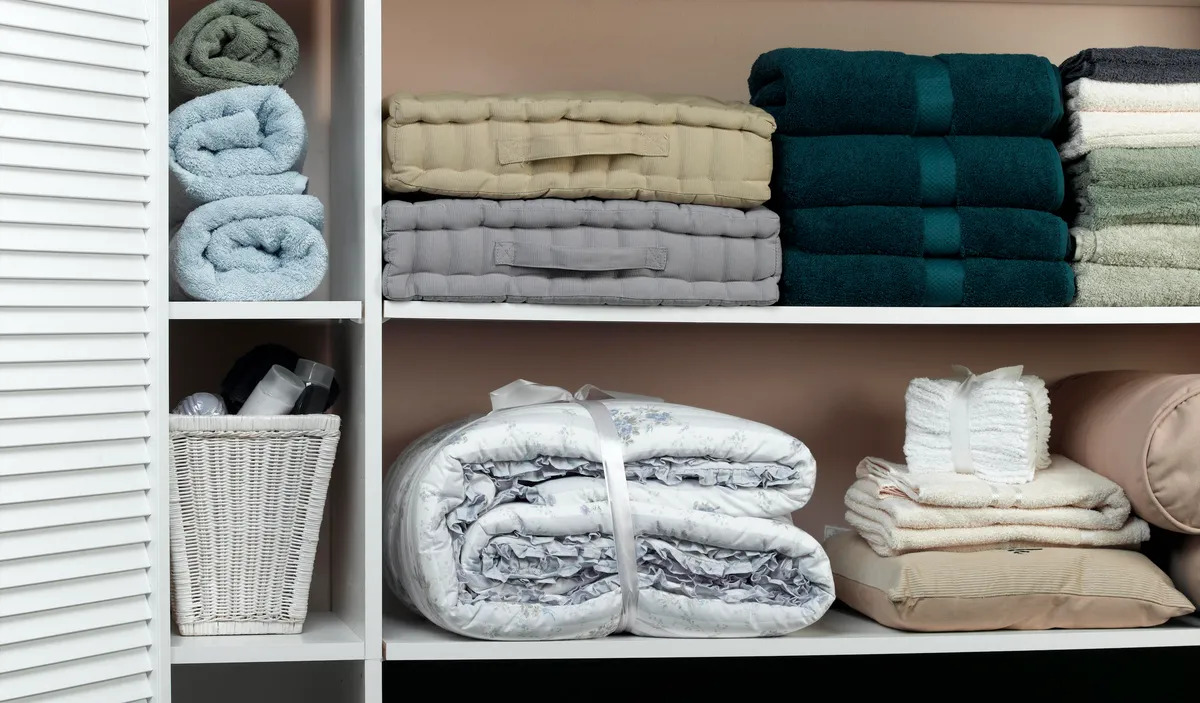

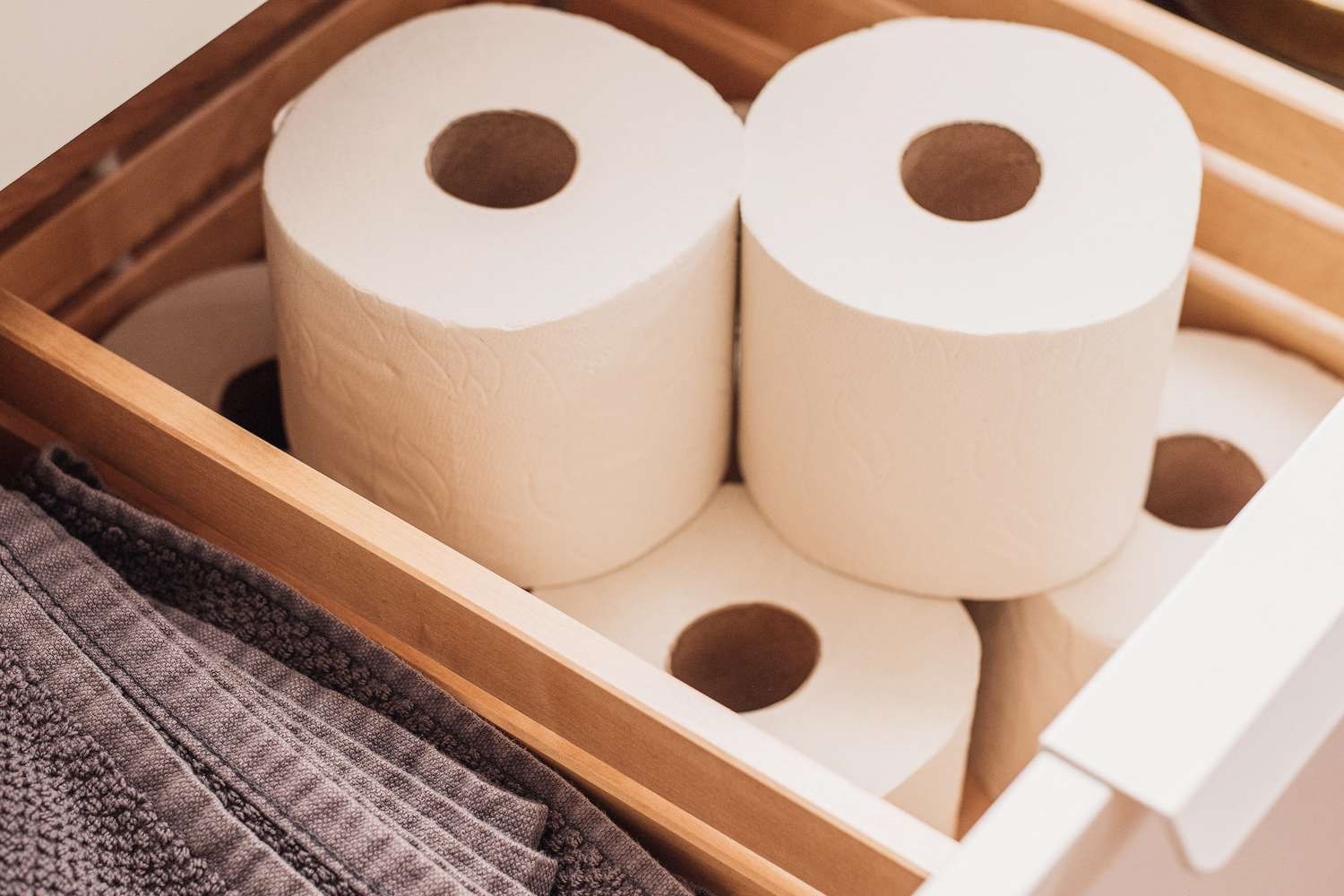

0 thoughts on “How To Store Extra Comforters”